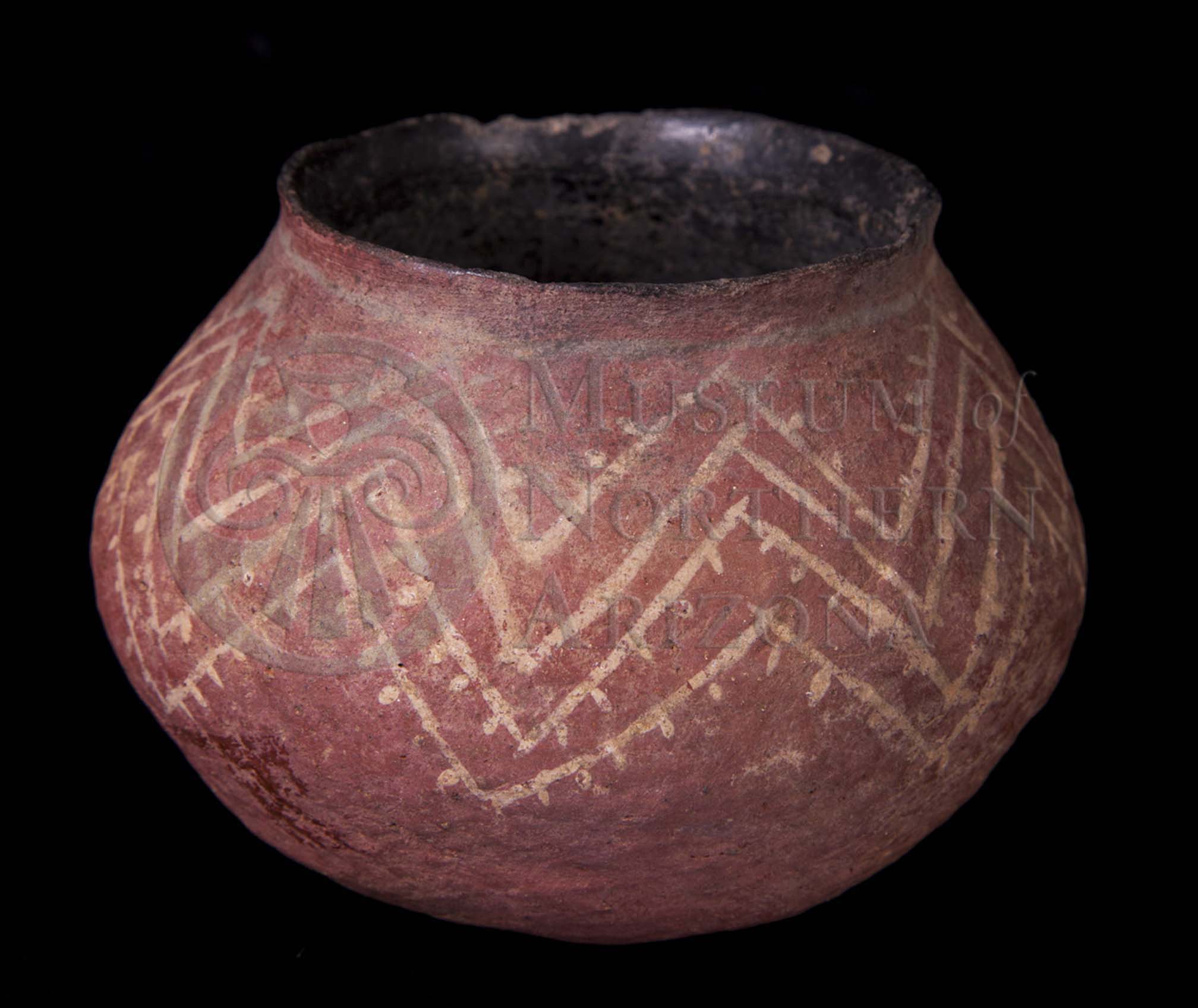
Salado White-on-red jar from the Museum of Northern Arizona collections. Click the image to open the Salado White-on-red gallery.
Salado White-on-red is the painted variety of Salado Red and has a similar distribution, which is mainly confined to the Roosevelt Basin, Arizona.
Archaeological Culture: Salado
Date Range: A.D. 1250-1450.
Construction: By coiling.
Firing: In an oxidizing atmosphere.
Core Color: Gray to black, tan to brick-red.
Temper: Diabase-rich sand, occasionally ground sherds.
Surface Finish: Smoothed, obliterated corrugated; bowl interiors usually smudged and polished; jar neck interiors usually smudged and polished; red-slipped exteriors.
Surface Color: Red (occasionally brown or black exteriors from fireclouds and over-firing).
Forms: Bowls, jars, vases, pitchers, effigies.
Decoration:
- Paint: White.
- Pigment: Presumably kaolin.
- Design: Narrow lines and pendant dots on vessel exteriors.
Variants: Obliterated, indented corrugated, corrugated, scored, coiled and grooved, and/or non-smudged.
Comparisons: Gila White-on-red, which was made by paddle-and-anvil and lacks corrugation. Cliff White-on-red occurs only as recurved bowls.
Comments: Lyons and Clark (2012:30) do not consider Salado Red-on-white or its variants to be a Roosevelt Red Ware.
Compiled from the following sources:
Clark, Jeffery J. (2001) Tracking Prehistoric Migrations: Pueblo Settlers among the Tonto Basin Hohokam. Anthropological Papers No. 65, University of Arizona, Tucson.
Lyons, Patrick D., and Jeffery J. Clark. (2012) A Community of Practice in Diaspora: The Rise and Demise of Roosevelt Red Ware. In Potters and Communities of Practice: Glaze Paint and Polychrome Pottery in the American Southwest, A.D. 1250-1700, edited by L.S. Cordell and J.A. Habitcht-Mauche, pp. 19-33. Anthropological Papers No 75. University of Arizona, Tucson.
Muncaster, Lara Danielle. (2010) A Comparison of White-on-red Archaeological Ceramics from the U.S. Southwest. Bachelor’s thesis (Honors), Department of Anthropology, University of Arizona, Tucson.
Compiled by:
Meghann M. Vance, Northern Arizona University Anthropology Laboratories.
